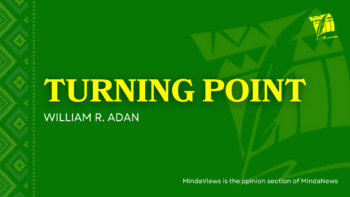DAVAO CITY (MindaNews/24 September) — A women’s group has urged both the government and the Moro Islamic Liberation Front (MILF) to include women in their respective peace panels.
Irene Santiago, chair of the Mindanao Commission on Women (MCW), said gender ‘may not be central’ to the conflict between the MILF and the government ‘but they are central to its resolution.’
MCW, a group pushing the so-called Mindanao agenda from the women’s perspective, will again send its February 2006 proposals calling on both panels to allot seats for women in decision-making bodies that will lead the post-conflict rebuilding efforts in Mindanao.
Earlier, the group recommended that women should make up 30 percent of the board of the Bangsamoro Development Agency, an agency tasked to identify, implement and monitor development programs.
It also called for the setting up of the Special Fund for Women in the Mindanao Trust Fund that will serve as a ‘transitory mechanism for gender mainstreaming,’ she explained.
Women should also make up 30 percent of the decision-making system governing the Mindanao Trust Fund, Santiago said.
She urged both panels to learn some lessons from the 1996 peace agreement with the Moro National Liberation Front (MNLF), where women had to beg for ‘miniscule amount’ during the rebuilding efforts because they were not represented in the planning and decision-making process.
“It was really the way resources are allocated,” she said, adding, “if women are not involved in decision making about resource allocations, the priorities of men and women are different.
”
“Even women involved in the struggle, who were even considered ‘iconic,’ really had a hard time negotiating for resources after the 1996 peace pact was signed,” she noted.
She said that when people think of war, they only think of combatants, not of the whole system involving women and children.
“Oftentimes, women become ‘invisible so that when the peace dividends come, they are no longer included,” she said.
The amount that MNLF women were able to access after the peace agreement was ‘small’ but proved to be most sustainable, she said.
When given the choice, women tend to allocate resources on healthcare and childcare or on access to potable water among households while men tend to prioritize the building of structures and things that would boost their status, she added.
She also said it would be a big flaw in the peace negotiations if women don’t get to participate in the discussions of issues that have great impact on their lives.
“If development is the answer to conflict, then how can you have a genuine and sustainable development without women?” she asked. “’Women are central in resolving the conflict.” (Germelina Lacorte/Mindanews)
